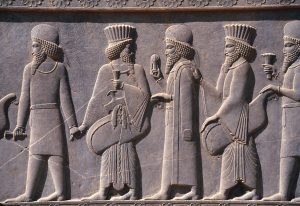

How realistic is regime change in Iran? How and when Can it happen?
By
MG Paul Vallely, US Army (Ret)
We have a President and Secretary of State, Mike Pompeo who are committed to regime change in Tehran, Iran sooner rather than later!
If many of the preconditions for regime change are in place, is the time right in the near future? To this the answer is yes, if, a realistic strategy and foreign policy is developed. And it will certainly require a well-organized and funded coalition that can draw from all supporters inside and outside of Iran for a new, free democratic Iran.
Without underestimating the power in the hands of the mullahs, the truth is that Iran today. Iran is passing through “the deepest crisis the nation has experienced in decades” and is further isolating the country from its neighbors and other nations. A new future must come into being for the younger generations as well as the older generations. Policies since the late 70s have produced nothing but grief for much of Iran’s population. A number of protests took place recently in Iran that received almost no attention anywhere other than inside the country itself. These events occurred in peripheral cities that suffer from rising unemployment, lack of infrastructure, increases in the cost of living, extreme climatic conditions, and air pollution. These cities are marginalized in Iran’s public discourse, which is reflected in an allocation of resources that is not commensurate with the needs of the residents – most of whom are classified as “ethnic minorities”. In those residents’ eyes, government policy is negligent and inattentive to their distress. Large-scale violent demonstrations took place recently in the Iranian city of Kazerun, which is under the jurisdiction of the Fars Province. They were the collective response of residents to publication of a plan for a new administrative division of Fars that intends to remove two densely populated areas from the jurisdiction of the Kazerun municipality and grant them independent status (a sub-province called Koh-Chenar). Underlying the protests is the plight of many residents of the province who have long suffered from difficult working and living conditions. The administrative partition proposal served as a spark that ignited flames of frustration over government neglect.
The fall in value of the Iranian currency—despite rising oil revenues—and the massive increase in the rate of unemployment over the past decade signal an economic crisis already heralded by double-digit inflation. In some cases, the government has been unable to pay its employees—including over 600,000 teachers—on time. We understand that there is a great transfer of money out of Iran, much of it coming to the US and other countries. Money laundering in South America has been validated. So, the question is, “What is happening in Iran? At the start of the new Iranian year, it was having difficulty financing over half of its projects, forcing hundreds of private contractors into bankruptcy. Meanwhile, fear of an international crisis over the nuclear issue, and the possibility of new sanctions imposed by the U.S., have put a damper on the economy’s
Pompeo left open the possibility of a new deal, but one based on 12 conditions—including a full halt to all uranium enrichment, withdrawal of Iranian forces from Syria, and an end to support for groups like Hezbollah, the Houthis, and Shiite militias in Iraq—that the current regime would never support. The idea may seem to be that the U.S. will simply continue to ramp up the pressure until the regime capitulates. Any plan must not follow and be close to the neoconservative impulses of the George W. Bush administration people. Or for that manner, follow any of the Obama failed policies that had no specific strategy to assist the Iranian people in their quest for freedom and democracy. Pompeo argued that recent economic protests in Iran are evidence of public anger at a regime that “reaps a harvest of suffering and death in the Middle East at the expense of its own people.”
In a brief question-and-answer postlude with Heritage Foundation President Kay Cole James, Pompeo came even closer to calling for an uprising, saying, “At the end of the day, the Iranian people will decide the timeline. At the end of the day, the Iranian people will get to make a choice about their leadership. If they make the decision quickly, that would be wonderful. If they choose not to do so, we will stay hard at this until we achieve the outcomes that I set forward today.”
Given that there’s almost no chance of Iran meeting the Trump administration’s conditions, the hope seems to be that the Iranian people will take matters into their own hands. This is an enormously risky strategy. Many Iranians who are highly critical of their government’s policies are also resistant to foreign interference in their domestic politics. The regime already depicts anti-government demonstrations as American-inspired regime-change efforts. Pompeo just endorsed that depiction.
Why does the Islamic Republic behave as it does? The answer is that, as the spearhead of a revolutionary cause, it can do no other. The Islamic Republic is unlike any of the regimes in its environment, or indeed anywhere in the world. Either it will become like them—i.e., a nation-state—or it will force them to become like itself. As a normal nation-state, Iran would have few major problems with its neighbors or with others. As the embodiment of the Islamic Revolution, it is genetically programmed to clash not only with those of its neighbors who do not wish to emulate its political system but also with other powers as Iran continues as a threat to regional stability and world peace.
As the Islamic Republic continues to behave as it does it will be impossible for others, including the United States, to consider it a partner, let alone a friend or ally. This does not exclude talks, or even periods of relative détente, as happened with the USSR during the cold war. But just as the Soviet Union remained an enemy of the free world right up to the end, so the Islamic Republic will remain an enemy until it once more becomes a responsible nation-state.
How, then, should one deal with Iran in its current phase? There are several options. The most obvious is to do nothing. Among the attractions of this option is that, at least theoretically, it would deny the Islamic Republic the chance to cast itself as the grand defender of Islam against the depredations of the “infidel” camp led by the United States. It would also allow internal tensions in Iran to come to the forefront.
A robust and coordinated American posture on the economic, diplomatic, political, and moral fronts is creating forceful pressure on the current leadership and inspire new courage in its opponents, this coalition being an example. There is no denying that the mechanics of regime change are a delicate and often highly chancy matter, and that the historical record offers examples of failure as well as of success. But there is also no denying that the game is worth the candle. Accelerating the collapse and replacement of this aberrant tyranny, a curse to the Iranian people and to the world, will strike a blow against anti-Western and anti-democratic forces all over the globe, safeguard America’s strategic interests in the Middle East and beyond, and add another radiant page to the almanac of American support for the cause of freedom.
But the risk in the do-nothing option is clear. Interpreting it yet another sign of weakness on the part of its adversaries, the Islamic Republic may hasten its program to “export the revolution” around the Middle East and, more importantly, develop a credible arsenal of nuclear weapons. The result would be an even bigger challenge to the regional balance of power and to the world.
An alternative to the do-nothing option is the one favored, today as yesterday, by the apostles of dialogue: namely, to reach an accommodation with the Islamic Republic on its terms, in the hope that this will somehow, in time, help to modify its behavior. What matters, they say, is to engage the Islamic Republic as a partner in international arrangement that, over an unspecified period, will end up imposing restraints on its overall behavior.
The risk here is equally obvious. Having won an initial concession from the “infidels,” the leadership would instantly and reflexively demand more. After all, dreams of conquering the world in the name of Islam, just as Hitler aimed to do in the name of the Aryan master race and the USSR in the name of Communism.
Proponents of “dialogue” like to cite the “Nixon in China” moment as a model for dealing with the Islamic Republic. But they forget two facts. The first is that, during Nixon’s presidency, the initiative for normalizing relations came not from the United States but from China, which was then trying to recast itself as a nation-state among nation-states. The Islamic Republic is not in that position, or anywhere near it. In fact, precisely because it bases its legitimacy as a revolutionary power on the teachings of Islam, something it does not fully control in doctrinal terms, it cannot abandon its revolutionary pretensions as easily as did the Maoists in Beijing, who “owned” their own ideology and could alter it at will.
There remains another option: regime change. The very mention of this term drives some people up the wall, inspiring images of an American invasion, a native insurgency, suicide bombers, and worse. But military intervention and pre-emptive war are not the only means of achieving regime change. Covert, information warfare or as I like to call it, strategic Psychological operations. and intelligence operations will be critical.
What matters is to be intellectually clear about the issue at hand. The U.S. and Middle East will not be safe if Iran, a key country in a region of vital importance to the world economy and to international stability, remains the embodiment of the Khomeini’s cause. Nor can the U.S. allow the Khomeini’s movement, itself a version of global Islamism, to achieve further political or diplomatic gains at the expense of the Western democracies.
The most immediate action by Tehran would be to strengthen the mullahs and demoralize all those inside Iran who have a different vision of their country’s future and an active desire to bring it about. In 1937 and 1938, many professional army officers in Germany, realizing that Hitler was leading their nation to disaster, had begun to discuss possible ways of getting rid of him. But the Munich “peace” accords negotiated by British Prime Minister Neville Chamberlain handed Hitler a diplomatic triumph and, with it, a degree of international legitimacy that, from then on, any would-be putschists could hardly ignore.
In the Middle East, this story has been repeated many times. The West helped Gamal Abdel Nasser transform the Suez fiasco into a political triumph, thereby encouraging an even bigger and, for Egypt, more disastrous, war in 1967. The 1991 ceasefire that allowed Saddam Hussein to remain in power in Baghdad, interpreted by him as a signal of American weakness, emboldened him quickly to eliminate his domestic opponents and to begin preparations for a bigger war against the “infidel.” After the first al-Qaeda attack on New York’s World Trade Center in 1993, President Clinton dispatched a string of envoys to Afghanistan to strike a bargain with Mullah Muhammad Omar and the Taliban. Not only, to quote the Taliban foreign minister, was this seen as “a sign of weakness by the Crusader-Zionists,” and one that immensely enhanced the prestige of al Qaeda and Osama bin Laden, but it discouraged the anti-Taliban forces, many of whom concluded there was no point in fighting a foe backed by the world’s only superpower.
That is the effect that reaching an accommodation with the regime will have on Iran’s own democrats and reformers. And it will have the same weakening effect on the growing democratic movement elsewhere in the Middle East. Some signs of this are already visible. For example, the fragile consensus belatedly formed around the idea of a two-state solution for Israel and the Palestinians is under pressure from a new “one-state” formula propagated by the “defiance front” led by Iran and including Syria, Hezbollah, Hamas, Islamic Jihad, Libya, and the Sudan. In Lebanon, Hezbollah and its allies have been encouraged by Tehran to pursue a systematic bullying of the democratically elected government of Prime Minister Fouad Siniora. In Syria, the pro-reform camp has been defeated, and the Baathist regime, a vicious menace, has entered into an unprecedented dependence on Tehran. Even major powers like Russia, China, France, and Germany calibrate their relations with the Islamic Republic with reference to how they suspect Washington will, or will not, be acting.
By contrast, in opting for regime change, the U.S. would send a strong signal to the democratic movement inside Iran, as well as throughout the Middle East, that the Bush Doctrine remains intact and that the movement is doomed. Such a policy would also encourage Iran’s neighbors, and other powers concerned about aggressive Khomeini’s, to resist the political and diplomatic demarches of the Islamic Republic without fear of being caught out by a surprise deal between Tehran and Washington.
At home in the United States, a policy and strategy of regime change vis-à-vis the Islamic Republic would have the immense advantage of moral and political clarity. If backed by the requisite political will, it could open the way for a truly bipartisan approach toward dealing with a regime now identified as the United States’ most determined and potentially dangerous adversary in the region. For it is hard to imagine a democratic and pro-Western Middle East being built without Iran, the largest piece in any emerging jigsaw puzzle.
Abroad, a U.S. policy of regime change would give heart to all those rightly worried by the alliance that Ahmadinejad is trying to build with thugs and lunatics like North Korea’s Kim Jong-Il, Zimbabwe’s Robert Mugabe, Venezuela’s Hugo Chavez, and the Castro brothers in Cuba. Even today, Tehran is the ideological capital of international terrorism, with more than 60 groups from all continents gathering there each February for a global terror-fest. A triumphant Ahmadinejad, armed with nuclear weapons, would only boost the international terrorist movement, thus further undermining the security of the United States and its allies. That alone is a powerful argument for regime change.
The short answer is yes. Without underestimating the power still held by the mullahs over the Iranian people, let alone their ability to wreak devastating havoc in places near and far, several factors suggest that, like other revolutionary regimes before them, their condition is more fragile than may at first appear.
One sign is the loss of regime legitimacy. The Islamic Republic owed its initial legitimacy to the revolution of 1979. Since then, successive Khomeini’s administrations have systematically dismantled the vast, multiform coalition that made the revolution possible. The Khomeini’s have massacred their former leftist allies, driven their nationalist partners into exile, and purged even many Islamists from positions of power, leaving their own base fractured and attenuated.
The regime’s early legitimacy also derived from referendums and elections held regularly since 1979. In the past two decades, however, each new election has been more “arranged” than the last, while the authoritarian habit of approving candidates in advance has become a routine part of the exercise. Many Iranians saw last year’s presidential election, in which Ahmadinejad was declared a surprise winner, as the last straw: credited with just 12 percent of the electorate’s vote in the first round, he ended up being named the winner in the second round with an incredible 60 percent of the vote.
Still another source of the regime’s legitimacy was its message of “social justice” and its promise to improve the life of the poor. This, too, has been subverted by reality. Today, more than 40 percent of Iran’s 70 million people live below the poverty line, compared with 27 percent before the Khomeini’s seized power. In 1977, Iran’s GDP per head per annum was the same as Spain’s. Today, Spain’s GDP is four times higher than Iran’s in real dollar terms. As the gap between rich and poor has widened to an unprecedented degree, the corruption of the ruling mullahs, and their ostentatious way of life, have made a mockery of slogans like “Islamic solidarity.”
A second sign is the presence of a major split within the ruling establishment itself. The list of former Khomeini’s who have distanced themselves from today’s regime reads like a who’s who of the original revolutionary elite. It includes former “student” leaders who raided the U.S. embassy in 1979, former commanders of the Islamic Revolutionary Guard Corps, and dozens of former cabinet ministers and members of the Islamic Majlis (parliament). Most have adopted a passive stance vis-à-vis the regime, but a surprising number have clearly switched sides, becoming active dissidents and thereby risking imprisonment, exile, or even death. Any decline in the regime’s international stature could deepen this split within the establishment, helping to isolate the most hardline Khomeini’s.
A third harbinger is that the regime’s coercive forces have become increasingly reluctant to defend it against the people. Since 2002, the regular army, the Islamic Revolutionary Guard Corps, and the professional police have refused to crush workers’ strikes, student demonstrations, and other manifestations of anti-regime protest. In many instances, the mullahs have been forced to deploy other, often unofficial, means, including the so-called Ansar Hezbollah (“Supporters of the Party of God”) and the Based Butadiene (“Mobilization of the Dispossessed”).
A fourth sign is the emergence of alternative sources of moral authority in Iranian society. Even in religious matters, more and more Iranians look for guidance to non-official or even anti-official mullahs, including the clergy in Iraq. (Admittedly, this is partly since the present “Supreme Guide,” Ali Khamenei, is a mid-ranking mullah who would never be accepted by senior Shiite clergy as a first among equals.)
As for non-religious matters, there was a time when the regime enjoyed the support of the overwhelming majority of Iran’s “creators of culture.” Today, not a single prominent Iranian poet, writer, filmmaker, composer, or artist endorses the Khomeini’s; most have become dissidents whose work is either censored or banned. Opposition intellectuals, clerics, trade-union leaders, feminists, and students are emerging as new sources of moral authority.
Finally, there are at least the outlines, although no more than the outlines, of a strategic, political alternative. Like nature, society abhors a vacuum. In the case of Iran, that vacuum cannot be filled by the dozen or so groups in exile, although each could have a role in shaping a broad national alternative. What is still needed is an internal political opposition that can act as the nucleus of a future government.
Unfortunately, such a nucleus cannot be created so long as the fear exists that the U.S. and its allies might reach an accommodation with the regime and leave Iranian dissidents in the lurch. And that fear has roots. In the years 1999-2000, President Khatami succeeded in splitting the opposition by boasting of the terms of his forthcoming “grand bargain” with President Clinton. His message was ingeniously twofold: the deal would help solve the nation’s economic problems and open the way for less repressive measures in social life and culture, but it would include a stipulation that America would never help opponents of the Khomeini’s regime. Although, as we have seen, the “grand bargain” itself came to naught, the message and its implications have hardly been forgotten.
With a clear compass, the litmus test for any policy toward Iran will likewise be clear: does this activity, program, or initiative help or hinder regime change? Under that general guideline, any number of specific policies can be envisioned, some of them already in place. For instance, the adoption of a regime-change strategy does not preclude American participation in diplomatic initiatives focused on issues, such as the current efforts to engage the Islamic Republic in the matter of its nuclear ambitions. But the crucial criterion is that process must not be allowed to become a substitute for policy. In the hope of winning concessions from the mullahs, Germany, France, and the UK, the three EU partners in the talks, have chosen to ignore the question of the sanctions already envisaged under the Nuclear Non-proliferation Treaty for the regime’s repeated violations of its provisions; the U.S., by contrast, can and should press for their application.
Above all, the United States should be, as the President stated in his address to the UN, resolutely on the side of the Iranian people. Programmatically, two things are needed here: assuring Iranians in no uncertain terms that the U.S. will never endorse or grant legitimacy to the current despotic regime, and helping to expose the Islamic Republic’s repressive policies, human-rights violations, rampant corruption, and wanton subsidization of some of the worst terror groups on the face of the earth. Funding Iranian opposition groups, if needed, is one way to accomplish this. More important and ultimately perhaps more effective is for the U.S. to use its immense bully pulpit to publicize the Iranian people’s struggle for freedom.
A more robust and coordinated American posture on the economic, diplomatic, political, and moral fronts would create forceful pressure on the current leadership and inspire new courage in its opponents. There is no denying that the mechanics of regime change are a delicate and often highly chancy matter, and that the historical record offers examples of failure as well as of success. But there is also no denying that the game is worth the candle. Accelerating the collapse and replacement of this aberrant tyranny, a curse to the Iranian people and to the world, will strike a blow against anti-Western and anti-democratic forces all over the globe, safeguard America’s strategic interests in the Middle East and beyond, and add another radiant page to the almanac of American support for the cause of freedom.
- Iran: The Hollowing-Out of the Regime. Iran is ripe for regime change. Change may come in weeks, months or years, depending on chance events and particularly on whether the local authorities and their security forces, at least in some areas, get tired of killing people.
- What is likely to push such developments forward? The answer is that the new American policy, whether by chance or intent, may be as good as anything.
The regime is dead, and no resuscitation is possible and it will be up to the Iranian people to make this happen. The country is yours to take. Your country will not be served on a silver platter. You need to be active….All of you need to unite!
OOOPS!
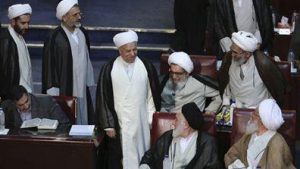
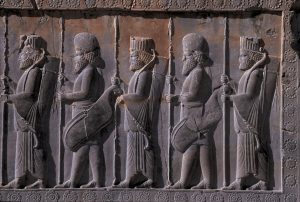
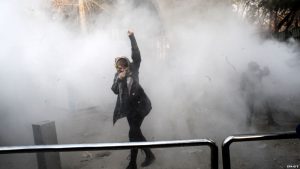
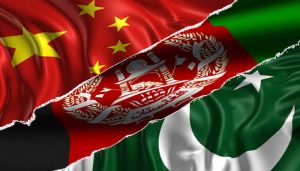
a



